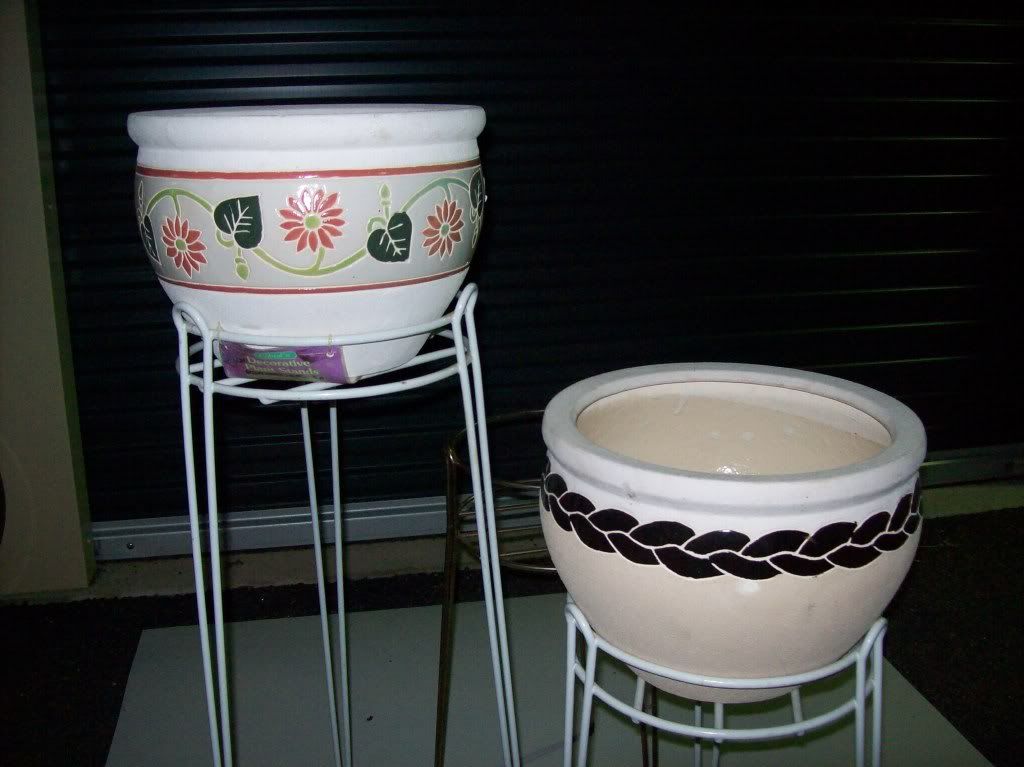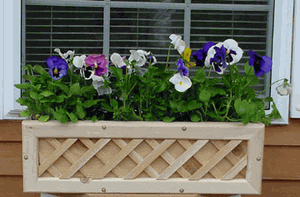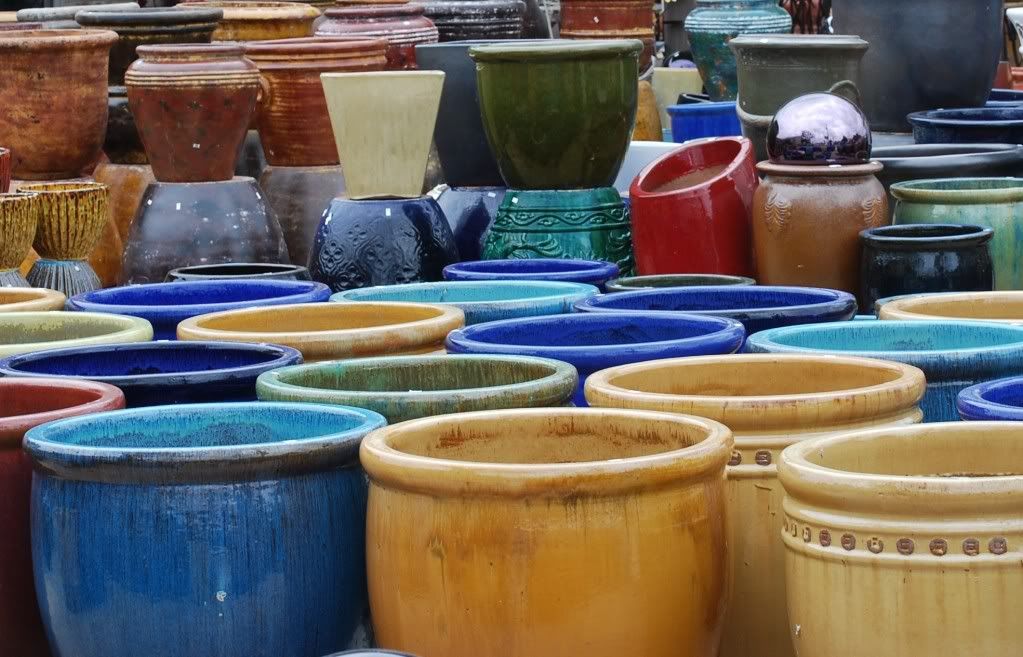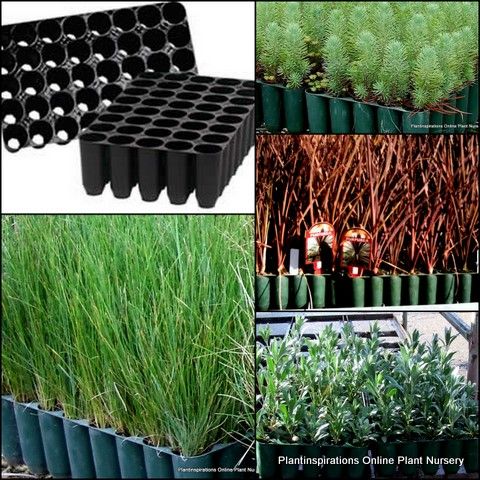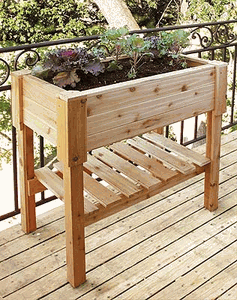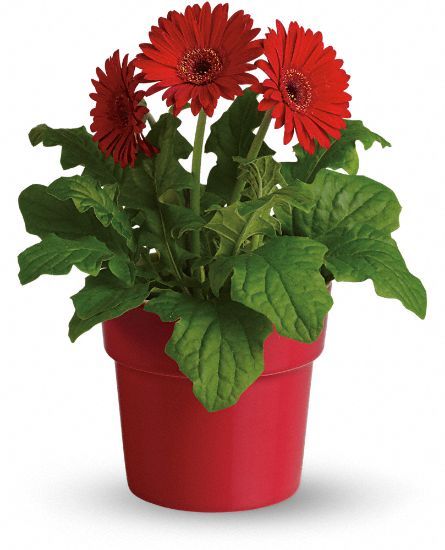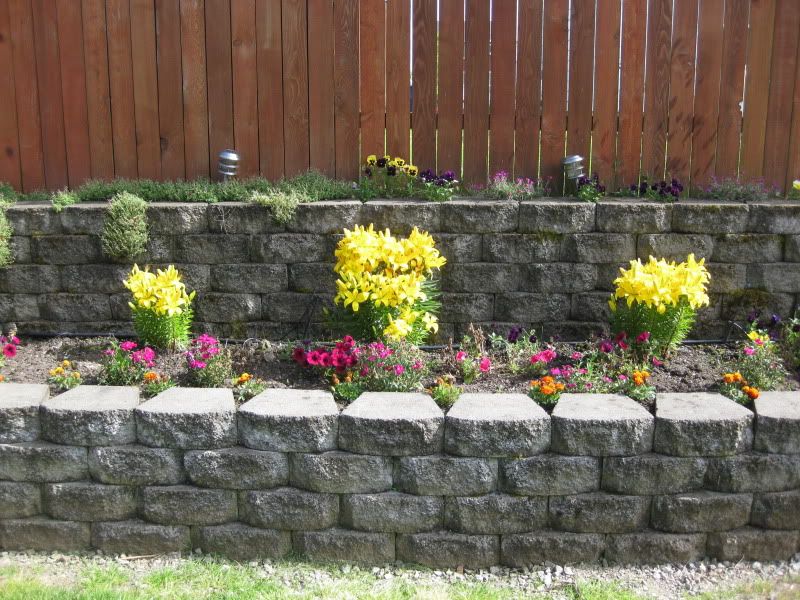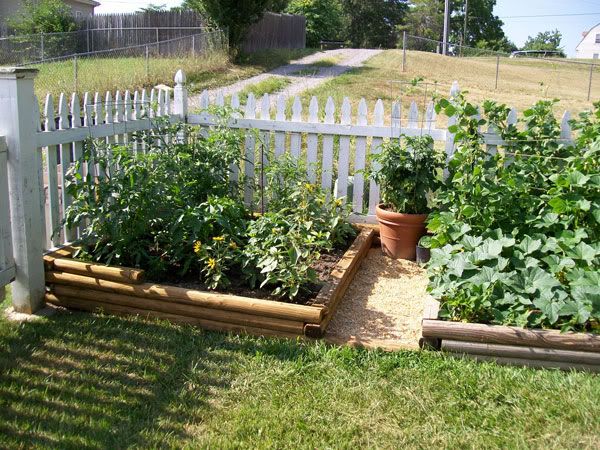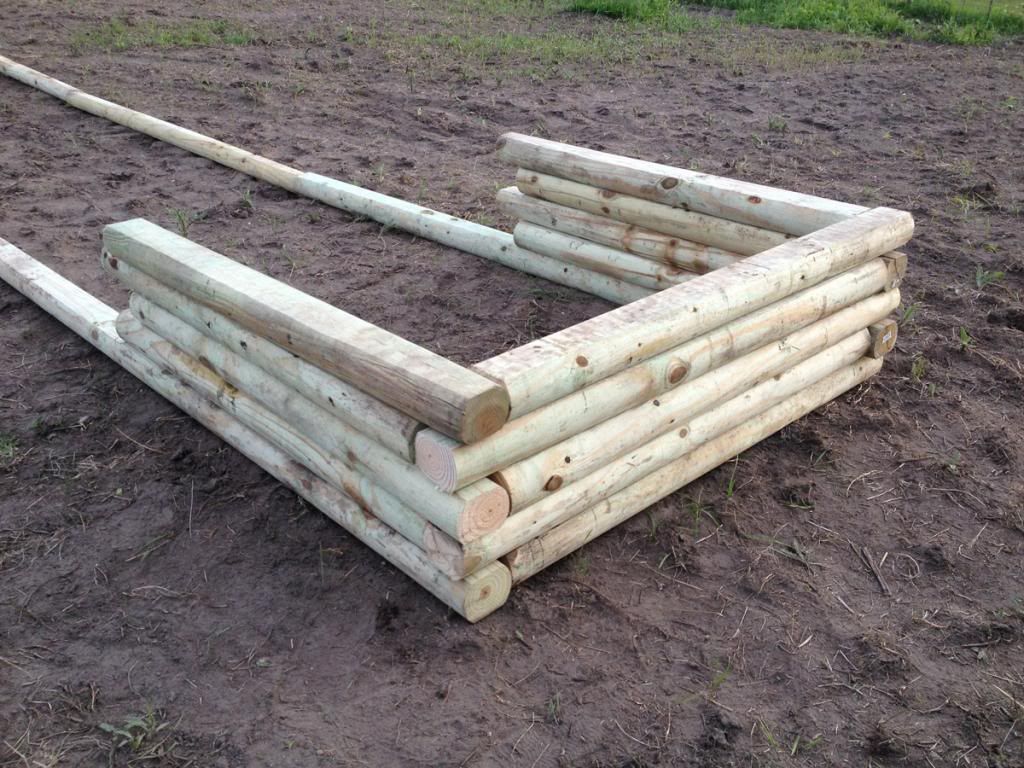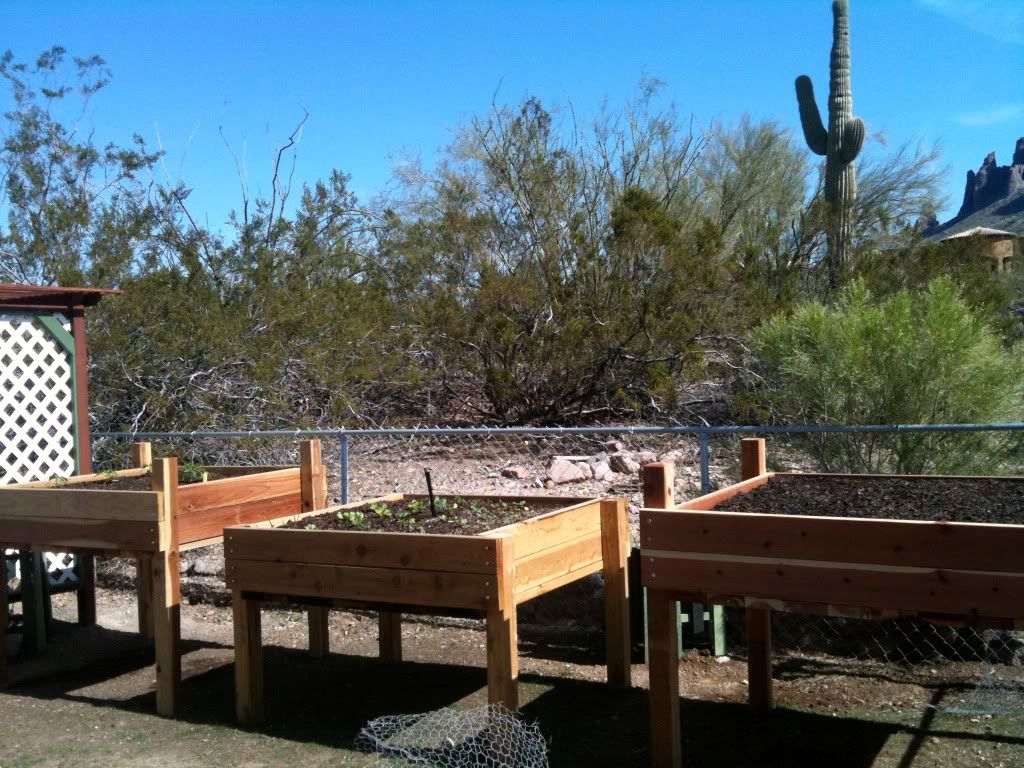Thursday, March 6, 2014
What Are The Pests And Diseases Of Fruits And Berries?
If I get different pests and diseases in my fruits and berries, this would be very bad because they will do damage to my fruit plants and their ability to yield healthy crops. Pests will suck the sap out of my plants and then leaves diseases that will cause extensive loss of healthy crops. When I am going to a nursery, or garden center I always look over their plants, even the varieties of plants that I am not considering like vegetables or flowers plants. Plants need to be at least a year old and be about 1 inch in diameter. I look at their leaves and root ball and if their leaves are full and well cared, then I will be bringing these plants home for my garden. But if I see any symptoms such as leaves are discolored or the trunk that has blemishes, I will be leaving them there at the store.
When you are still looking for plants, look the plants closely, at the shops, its buds, and their leaves and if it seems happy and healthy, that is good. If I see any discolorations and dryness, I know the plants are not in any good condition, so I do not want to bring these unhealthy plants home to plant in my garden or containers.
Here is a list of symptoms and what the problems that comes with this problem.
If there is yellowing leaves on a plant, it is possibly diseased or pest- infested, or has deficiency of nutrient. Wilted leaves is caused by being stressed by too little water or by being neglected. Plants that has chewed leaves, sticky residues, spots, webs, mushy foliage, and distorted leaf or crown, is called by other insect pest or disease. Scars in branches of woody plants is caused by branches or thestems damaged, which could lead to diseases. Spindly growth that are found on plants is causes by poor light conditions, it has outgrown the pot that it is growing and the plant has not been pruned or pinched properly. Poor color of the plant is causes by the plant being in distress. If the plant does not have a lot of roots, this is caused because the plant is very weak and it made not survive replanting it. If I see roots growing out of the bottom of the pot, this is not good because the plants have been neglect. If the plants have a lot of weeds with them in the pot, it is cause by nutrient defffficiency. If the soil is dry, this means the plant is lifeless and probably will not survive a transplant.
There are a lot of different pests that could really wreak havoc on my garden by causing great damage to my plants, and this will cause a big loss of my fruit crops. These are not the ones that I want in my garden that benefit my soil by breaking down organic materials that feeds my plants good nutrients.
There are many different small insects that are real bad for my garden, but it is good to see one of these crawling on my fruit plants, because it is the natural enemy of the pests that would damaged my fruit plants and the beneficent bug is a ladybug. The ladybug is a member of the beetle family. Some ladybugs do feed on the plant leaves, but most of them feed on the bugs and diseases that would attack my fruit plants, which would be fungi, white flies, aphids, mealybugs, and armored scale insects that attack coconut trees. There are two more bugs that I want to have as allies in my garden and they are ground beetle and the praying mantis. The ground bettle is dark brown or black and it runs fast. It"s shell is striped with lengthwise identations. They eat various types of caterpillars which can be helpful. The praying mantis feeds on aphids which would be good for my garden.
Pests comes in many different sizes and shapes, and some of them will go to certain fruits or berries. The pests will do different things to different parts of the plants, sometimes it will be the fruit. For each pest that I find in my garden, there has to be a way to show them out of my garden.Now I would like to talk about different pests and suggestions for natural, organic means that can destory or repel each type. One of the pests is aphids. These bugs will attack most types of fruit plants and they do thiiis by sucking the sap out of their leaves and buds. They also give plant viruses and the signs that they are present are curling leaves, stunted growth, red discolorations, and a black curly mold. Some examples of aphids are blackflies, greenflies, and wooly aphids. Wooly aphids will suck sap from the bark and shoots of apple trees.
These are ways that will discourage the return of any aphid infestations in my garden. One of the ways that I can do this is to work the soil real good with a rake and tiller between my fruit plantings. Plant sunflowers and milkweeds between all of my fruit plants. I always like to plant flowers that repel aphids where my plants are at. Some of these plants are chives, garlic, petunias and nasturtrums. By me, planting a herb garden that has some of these crops in it may be a natural solutions to having problems with aphids in my fruit plants.
Beetles is another pests that I have been watching out for them in my fruit garden. There are several different types of beetles that I may find in my fruit plants. Raspberry beetle larvae leaves damage on the ripening fruits of blackberry, raspberry, loganberry, and other berry plants that has soft berries. They look like maggots and they are small, white, and numerous. Pear Midge attacks the undeveloped, small pear fruit, they cause the fruit to blacken and fall off in June. Strawberry Seed Beetles is one that feeds on the seeds of strawberries from the outside of the strawberry. The other type of beetle that I like to talk about is known as Vine Weevil grubs which is the young will feed on grapes and strawberries, and this sometimes will destroy the plants. The adults will eat notches out of leaves at night, but they do not cause as much damage as the young ones.
Now I will like to tell how to keep these beetles away.
First, I will sprinkle my plants with water and then I will dust them with wheat bran. Another way, I will make a tea of boiled basil or cedar boughs and then I spray this tea onto my plants. I make a solution of two tablespoons of epsom salts in a gallon of water and I can spray this on my fruit plants. I can have these plants in my herb garden, which are rosemary, garlic, catnip, onion, rue, tansy and radish. I also like to have some nasturtruims, marigolds, and geraniums planted real close to my fruits and berries.
Borers are one that they make holes in the trunks of the trees, which weaken the trees and this will causes the trees to stop producing fruit. They like the wood of these trees which are, apples, peach, plum, and cherry trees. The damage that they leave behind blackened areas around the area that they attack on the trees. The bark of my trees will be worn down or absent over a large area of the trunk of the trees. The way to repell borers is to inhibiting the laying of eggs is the way to stop a borer infestation in my fruit trees. The best way to do this, is to cover each of my fruit trees with several layers of burlay and this will keep them from being able to lay their eggs, which will mean the covering suffocates them.
Caspid bugs will attack the currants, apples, and gooseberries by sucking all the sap from shoot, leaves, tips, and the fruit. The leaves at the shoot tips will develop tattered holes. Apples will have discoloration or bumps on their skins. There are several different natural means to repell the caspias from my plants. I need to keep my garden, rake regularly so I can unearth the insects and their larvae. In my garden, I need to be able to keep the birds coming back, because birds like to eat these caspids. I love to grow the manly different types of mints, because of the many different uses that can be done with mint and I have another one, and it is that mint will keep a multitude of pests of different sizes away from my berries and fruits. Caterpillars will feed on all of my fruit plants in the spring. They will tatter the edges of buds, leaves, and the flowers blossoms. Apple Sawfly caterpillars will crawl through the apple on June and cause the apple to drop off in June instead of autumn which is when they are suppose to do this. Gooseberry Sawfly is up to one inch in length, it is green with black dots and they eat the leaves of the gooseberry and the red currant bushes. By planting mint, garlic, rosemary, sage, thyme, onion, tomato, celery, tansy, and hyssop is a way to repell these caterpillars. I also would like to have some marigolds and geraniums planted close to my plants, because they are toxic to most pests. Curculios are small insects that will pierce a hole in the fruit and lay larvae in it and make the fruit fall off of the tree. Grubs are caterpillars that are immature that attacks the young, underdeveloped fruits and causes the fruit to fall off of the tree.to early. A way to repel grubs from your plants is to spray them a solution of 3 tablespoons of laundry or dish soap to a gallon of water. Another way is to make an extract from garlic, hot pepper, pine, mint and poplar and spray this extract on my plant leaves. I will make sure
Tuesday, February 11, 2014
Getting Started In Using Containers For Vegetables
If somebody wants to grow their own vegetables and have limited space, vegetables can still be grown in containers. Herbs and vegetables can be grown in containers . Some people who have a big area for their vegetables garden, they also like to use containers. Maybe they have try certain vegetables in their soil and it does not grow good in their soil, but they grow good in their containers. A lot of people like to grow herbs in containers, so they can have them real close to their house.
There are many different kinds of containers that can be use for growing vegetables, fruits, and herbs. Some of the different kinds of containers are plastic, clay, or terra-cotta pots. Window boxes and hanging baskets can be used for the same purpose of growing different types of plants. Plastic containers are light and inexpensive, and they come in any style or shape you will want to use. These plastic containers are very good to use for growing vegetables and fruits.
If a clay or terra-cotta pots is use, it will need to be line with plastic because they will lose moisture rapidly. If you decided not to have the pot permanent fixed somewhere, you will need to make sure you can move the pot because it will be very heavy because of all the soil. If you will be moving the heavy pots, you will probably need to invest in a caddy or another device on wheels, that are used for moving large containers.
Window boxes are good for growing herbs and leafy lettuce crops. Hanging baskets can be use to grow herbs, small bush tomatoes, and also trailing varieties such as strawberries.
The bigger the containers is the better,because a container will be about the size of a bucket which is about a two gallon and twelve inches diameter and this will be fine for most vegetables. If you are planning on growing larger plants like squash, cucumbers, and melons these vegetables will need to have a container twice the size of the containers that I just talk about.
The depth of the container is also important. The depth of the containers should be at least twelve inches deep to allow a good root run and a reservoir of moisture. Deeper pans will retain water but will need more potting mix for this one. Shallow pots will dry out real quick.
The best one to use as far as, potting soil goes is to go and buy your potting soil from a garden center or store. Any stores that sells garden supplies. Using store brought potting soil it will be weed free and free drainage and it will retain moisture and the right nutrients to give your plants a real good one. If you make your own compost you can used it if it is completely decomposed and when you are looking at it the soil needs to look like rich soil. If you are using compost and do not want to start having problems with weeds or diseases, only fill the bottom half with compost and put the store brought potting soil in the top half.
When the end of the season comes, do not throw the contents of your containers away, because you can recycle the contents by putting it in a vegetable patch as much, reusing it again in your containers or adding it to the compost pile if you have one. If you are reusing your containers always fluff it up and fill the container halfway, then filled the containers up with fresh mix.
Because blueberries and currants have to be in their pots for a longer time, always use a soil-based potting mix instead a soils mixes. Blueberries are real easy to grow in containers with the soil they need to grow. Blueberries has to have acidic soil to grow. For a long-term plants, you can start with smaller pots, then move to a large one when the roots fill the small one.
Always have your container in a warm, sheltered place and the soil is kept moist, you can sow all vegetables directly into your containers. For crops that are closely spaced such as lettuce, onions, or greens can be sow, allowing a few spaces. Cover with potting mix and always keep the surface moist. When you thin the seedlings in stages do this where you will have an even distribution of plants.
If you are planning on planting large plants, like cucumbers, eggplant, tomatoes, and peppers are best planted individually. Plant these plants in a large container with at least a 2-gallon volume or 12- inch diameter.
If you are harvesting vegetables you will need to move your containers into a greenhouse, garage, or a well-lit room. The potting soil should last about four weeks. After that vigorous, vegetables will need to be fed regular, so use a general purpose or balanced fertilizer for leaf and root crops and a high-potassium one for fruit-bearing vegetables such as tomatoes, eggplant, and peppers.
Watering is the biggest chore when you are growing vegetables or other edible crops in containers. Mid-morning and late afternoon are the best time to water your plants.
Some of the vegetables that are good to grow in containers are beet, pepper, potato, radish, spinach, and all greens, summer squash, sweet potato, okra, onions, lettuce, turnips, carrots, and scallion. Blueberries, currant and strawberry are the fruits that you can grow in containers.
Grow herbs in containers are a good choice for containers. Grow herbs in a medium size pot.If you are growing herbs for aesthetic reasons, grow several perennial herbs in a large containers.Sold herbs that match with the same growing conditions.
Summary
Using vegetables in different sizes containers is really a great idea especially if you don't have the space to grow a regular size gardens. Different types of herbs can also be planted in containers.
Labels:
clay,
gardening,
herbs,
planting,
plastic,
potting soil,
vegetables,
watering
Monday, February 10, 2014
How To Make Proper Drainage In Plant's Containers?
To have good plant health, the plants have to have good drainage. If houseplants do not have good drainage the plants can suffocate or can develop fungal disease if they are left standing in water, or if their soil remains continuously water. It does not matter what type of houseplants you have, they must all have drainage holes.
If the pot has more than one drainage hole, this is a lot better than have just one drainage hole. If the pot has several drainage holes , the water can penetrate at some point and cause water to collect at the base of the plant. If the pot has only one drainage hole in it, it can become partially plugged at some point and then cause water to collect at the base of the plant. By the pot having several drainage holes, the soil leaches out excess salts.
Always check all of the pots regularly to make sure that they are draining freely. If a plant looks droopy and you will need to check the soil and it is only damp, then the plants are probably being over watering the plants or the drain holes have become clogged with soil or roots.
For people that uses pots without drainage holes which are called cachepots, there are several steps that are done to help out the plants that are growing in them. After the irrigation process, the cachepots needs to be empty of the standing water. The plants needs to be protected against excessive moisture standing around their roots by placing the plant pot on something that is inverted, such as pebbles, pot, saucer, or marbles set inside the cachepot. By doing this it is very good, because it will help keep the roots free of water [standing] and expose them to air and plants need to have both of them to grow.
If the pots are self-watering their will still have excess moisture problems. .It reduces the times a person has to water, but the soil stays wet for long periods of time which creates bad conditions for the plants.
No matter what type of pot you have it is always a good idea to check the soil moisture before the plants are water. If it remains moist, wait until the soil dried. The drain holes needsto be check regularly and if the draining holes are found to be clogged , the hole needs to be free of the roots or other blockage.
This is how you need to do your pots with drain holes.
Drilling Drain Holes
1. Get your power drill and put a 1/2 inch bit in. Use a carbide bit for iron and brass containers, a masonry bit for ceramic or concrete pots.
2. Take some masking tape and crossed the strips to the pot's base, and then mark its center point.
3. Drill the hole, by allowing the bit to work its way into the pot's surface. Do not apply too much pressure which builds up frictional heat.
Applying Sealants
1. First thing the pot has to be prepare by washing and draining it. Then let it thoroughly dry before you begin to apply. 2. Put gloves on, then paint an even layer of latex sealant on the container's inside surface. Allow it to dry.
3.After the containers dry, apply a second coat of latex sealant to the pot's interior. Then it will need to dry for 24 hours before planting.
Summary
To have good luck with your plants growing in containers, they need to have unobstructed drain holes. They also need to have good watering conditioning, where the plants are not overwatered. The plants should not set in water for a long time because it will causes your plants problems.
How To Build A Raised Bed ?
When you are ready to make a raised garden bed, you will need to fill it with high-quality topsoil and always water it a lot, which will be where you will be growing healthy plants. These gardens are elevated and low-maintenance.
Tools and Materials
Tools- stakes, string, shovel, level, drill, hammer, saw horse, reciprocating saw.
Materials- 8 feet. 6x6 timbers [6 ], galvanized roofing nails, 5 inch barn nails [ 12 ] landscape fabric, topsoil, plants, mulch
Raised beds can be used as a landscape design. Raised beds can be used out of different materials such as stone, brick, wood timbers, and interlocking block. The bed is 5 x 3 feet and 18 inches deep. The timbers are stacked flush on top of each other in three layers which are secured with galvanized bar nails. Drainage holes are drilled into the frame so you can keel lined it with landscape fabric to prevent problems with weeds and keep the drainage holes from clogging up. If you plan on planting vegetables or shrubs in the raised bed , you will need to put landscape fabric on the sides of the bed only, because these plants have real deep roots.
Before you start to make your raised bed, always have in mind of what your plants are going to be so you will have the right site. Vegetables and sun-loving flowers need full sun which is 6 to 8 hours of direct sunlight everyday. If you do not have a spot like this, then you will need to build your raised garden bed in a shady area, with woodland and shade loving plants. nearby.
Step 1. A. Using your stakes get your area stakes out and use your string to mark the location of your bed. Then take your shovel and remove all the grass and weeds inside the area.
B. Now you will need to dig a flat trench two inch deep by six inches inside the perimeter of the area just inside the stakes.
Step 2
A. Measure, mark, and cut each of the timbers into one 54 inches piece and one 30 inches piece.
B. Take a wood sealer protect ant, and coat the cut ends of each timber.
C. Put the first row of the timbers in the trench. Use your level and positioned it across two timbers, then add or remove soil if you need to get them level.
Step 3
A. Put the second layer of timbers, staggering the pattern to cover the joints in the first layer.
B. Take your drill and put 3/6 inch pilot holes through the top timbers to the bottom layer near the ends of the timbers, then take your hammer and hammer the galvanized barn nails.
C. Now you lay the third row of the timbers doing the same pattern as before.
D. Drill pilot holes through the third layer of timbers into the second layer of timber, making sure you will be able to avoid hitting the nails underneath. Drive nails through the pilot holes.
Step 4
A. Always drill 1/2 inch drainage holes every two feet into the bottom layer of timbers.
B. Take the strips of landscape fabric and line the inside of the bed with them.
C. Hammer roofing nails through the fabric to attach it to the timbers.
Step 5
A. Put the bed with topsoil within four inches to the top. Tamp the soil down lightly with a shovel.
B. Now it is time to plant. You will need to loosening the root balls before planting. Apply a three inch layer of mulch. Then it needs to be water thoroughly.
Raised beds freeze faster and deeper than when you have in the ground planting beds. The outside edge of the bed has wider temperature difference than the inner core, put annuals and hardy perennials along the sides and tender perennials and bulbs near the center, where the soil temperature is more stable.
Raised beds dry out faster than in ground beds so you will have to water a lot.
Summary
If your soil is not good, you can have a raised garden bed and still have your vegetables or flowers.,
Thursday, January 30, 2014
What Are The Gardener's List Of Tools?
There are many different kinds of tools that gardeners need to have to work in their garden.
There are so many different tools on the market that can be overwhelming to everybody.
It is important that I enjoy using my gardening tools, so comfort needs to be the first consideration. I always try out the garden tool for ease of handling before I buy it. The shaft of a fork, spade, or rake needs to be the right length so I do not have to stoop, and the hilt or handle should be easy to grasp when I am wearing gloves, the weight and balance should feel right.
Spade
I will need a spade to dig planting holes for shrubs, trees, and large herbbbbbbaceous plants. A spade is also used to spread any manure, compost, and mulching materials
The blade should be sharp. If I have a forged steel blades, then this one can be sharpened when they lose their cutting edge.
Digging is the hardest on the back, I always make sure my spade handle is long enough.
Watering can
Buy a 2-gallon watering can with a long spout that I can water all of my plants with it.
Trowel
Trowel is probably a tool that I will used the most for all of my weeding and planting. In buying a stainless steel trowel is the best thing to do. A second trowel with a narrow blade is useful for planting bulbs and also getting out weeds with taproots, such as dandelions.
Shears
I will need to have a pair of shears that I will need for flower gathering, dead-heading and pruning of branches up to 1/2 inch in diameter. The shear's handles need to be comfortable to grip, and they will not slip in my hand, always make sure that the handles do not open too wide for your handles. The safety catch of my shears need to be operated with one hand.
Mower
The kind of mower I need to get is according to what kind of jobs that I will be using the mower for a small, hand-operated push mower will cut in widths of about one foot and I can also get a tractor.
Clippers
I have hedges so I will need these shears are essential equipment. They are used to tidy up grass where my mower can not reach, against walls and around the base of trees and shrubs and for clipping plants such as lavender. Some people uses clippers to prune roses.
Summary
Since I want to plant a garden and a flower bed, the tools that I have talked, about in this article I will need to get from a store.
Labels:
clippers,
gardening,
mower,
pruning shears,
rake,
spade,
tools,
trowel,
watering can
What Shrubs Are Good For Fall Color?
Usually when a person think of fall colors, trees comes to many people's mind, like the beautiful leaves on a sugar maple, but there are many shrubs that have very beautiful leaves on them. Shrubs not only have beautiful leaves, they also have fruits and berries on some of the shrubs.
Shrubs have many advantages over trees. Most of the shrubs will cost less money than trees. Shrubs mature more quickly and they provide good color the first fall after they are planted. Some good reasons to have shrubs in your yard are they do double duty by providing barriers, screens, ground covers or spring flowers.
All the shrubs that I will be talking about in this article are easy-maintenance plants. They also offer great fall color and they are for all over the country. There may be many other shrubs that would be available in your area that I want be talking about in this article. Always talk to your negibos or garden centers where you are living in.
Cranberry bush has red autumn fruit. In the spring it has flat, lacy clusters of white flowers. In fall their leaves range from yellow to red-purple. It is hardy to 50 degrees F. and this shrub reaches up to 15 feet high and wide.
Cranberry cottoneaster is a low wide-spreading shrub that reaches up to three feet high and three to six feet wide. It has dark, glossy green foliage in the summer and it turns to red or purple in fall. These shrubs has bright red berries, and they usually fast for several months. This shrub is hardy to 30 degree F.
Dwarf fothergilla is grown mainly for its intense yellow and orange-red fall foliage. In the spring, its bears clusters of honey-scented white flowers. This shrub prefer acid soil and it is hardy to -30 degrees F.
Witch hazel grows very high and very wide something like 15 feet. The winter flowers range from yellow to orange to red. Some of the fall foliage will be a single color or a mixture of red, yellow, and orange on the same plant.
Rugosa roses are very hardy shrub roses that has prickly stems that will grow as high as 3 to 8 feet. This shrub also provides fragrant 3 to 4 inches blossoms and their colors are pink, white, and purplish red. In the fall, you will have bright red tomato-shaped fruit, about one inch or more across. It is real hardy to the degree of -50 degrees F.
Winterberry has crops of bright red fruit that ripen in fall and can last all winter. It is hardy to -30 degrees F.
Firethorns has large, dense clusters of pea-size fruits range from red to orange to yellow, depending on which type of shrubs you get.
Fragrant sumac has attractive three inch glossy green leaves that release a fragrance when you touched or crushed. It is hardy to -40 degrees F.
Heavenly bamboo has white flowers in midsummer and in the fall this shrub has orange-red pea-shaped fruit. It is hardy to 0 degrees F.
Summer sweet grows 10 feet tall. In the summer this shrub has white flowers on the branch tips. The 2 to 4 inches leaves turn yellow to golden in the fall. This shrub is -40 degrees hardy.
Burning bush has red fall foliage. The plant grows 15 to 20 feet wide and high. It is -30 degrees F hardy.
Japanese maples has delicate deeply cut leaves that grows 2 to 4 inch long. They are hardy to -20 degrees F. This spring growth is red, the summer leaves are soft green and the fall foliage is scarlet.
Oak leaf hydrangea has large, showy, cone-shaped clusters of white flowers in early summer and in the fall this shrub has eight inch oak like leaves that are either crisom or bronze. It is hardy to -20 degrees F.
Purple beaautyberry has clusters of 1/8 inch fruits in an unusual lilac violet color. In cold winter areas, these shrubs may freeze to the ground, but do not worry, it will come back from the roots. It is hardy to -20 degrees F.
Japanese barberry has small rounded leaves that turns yellow, orange, and red in fall. It is hardy to -30 degrees F.
Red choke berry grows up to six to eight feet high. In the summer this shrubs has bright red fruits in late summer and it does well into winter. Fall leaf color on this shrub is a bright red-purple that lasts for several weeks. Black choke berry has ripe fruit that it is blacklist purple. It is hardy to -30 degrees F.
Summary
There are many different shrubs that you can put in my yard to have so much pretty color for the fall.
Wednesday, January 29, 2014
What Are The Basic Skills Of A Good Gardener?
There are a few basic skills that I will need to learn to become a good gardener. Most of these skills will become second nature to everybody once I have learn the skills of being a good gardener, then gardening becomes easy.
Planting
Planting is the most important skill that I can learn. Some different ways that I can learn on how to plant are watching a very experienced gardener or to volunteer to get hands on experience.
To plant my newly purchased plants, dig a hole larger than the pots that the plants are in. I will need to turn the pots upside down with one hand and put my other hand underneath to catch my plants. Always try to get the plants out very slowly. Do not yank or pull the plant out by the stems. Always plant them at the same level that they was growing in the pot, but in a slight depression. Then I will need to pack the soil around the plant, this is done using only my hands.
As I plant each plant I will build up, a mud wall about two inches high around each plant. This will help to keep the moisture in. Then I will have to water each plant with a water hose very slowly until each plant thoroughly saturated. If you live in a cold winter area, you will need to fertilize every couple of weeks until July and then you will need to stop now so the plants can get ready for the cooler fall weather. With perennials you do not fertilize them when they are in their second year.
Transplanting
When I have a perennial that I want to divide and transplant it is best done in the early spring, just as the plant emerges. I can basically do it anytime expect during the summer heat. Dig the plant up and cut it in half or in several pieces depending on its size. I can use a spade or a kitchen knife. to do this.
Transplanting is like planting except I sometimes would like to shape up my plants. This means cutting back the top growth so the roots do not have to much to support while they are getting establishing themselves. This plant needs to end up at the same level that it was growing before it was started. Also I will need to create an earthen dam around the base to catch and hold the water. I will need to thoroughly soak the soil right after I plant them.
Growing From Seed
Sowing seeds is a whole lot less work , than planting. Some of the seeds, not all kinds of seeds, can be sprinkled over the soil I can either do this in fall or late winter with annuals such as poppies, bachelor's buttons, and larkspurs. Vegetable seeds are always planted in rows at the time that they are suppose to be planted. Take your rake, and dig and level the soil to create a furrow or so deep. Then I will plant my seeds like beans, corn, and peas or whatever I choose to plant now. I will cover the seeds about a 1/4" to 1/2" deep. I will need to space the seeds a few inches apart, knowing this is they germinate and grow, I will need to thin them so this will allow them room to grow. Different vegetables mean different ways to thin them.
Sowing seeds inside is easier to do because you will be able to sit down and do this part. Next the container needs to be fill with a soil mixture that is made for the seedlings. Plant a few seeds into each cell and cover them exactly as the directions say on the back of the seed packet. Always water from the bottom by soaking the containers in their trays. Do not water from the top, because this will move all the seeds that I have planted. Seed plants will also tell you when to plant which is four to eight weeks before the average frost-free time in your area, always count backwards from that time. A good thing to do during the winter is to get it your garden down on paper.
Spacing Plants
I will need to know some information on how to space my plants. For example, for trees and shrubs will need different spacing. Trees need a lot of space so the trees will have pl entry of room to grow. For perennials and annuals, I can always check with nursery centers or a garden centers.
Feeding Plants
Once everything is planted and growing , now is the time to start feeding my plants. There is no set example in feeding my plants. Some plants are heavier feeders than other plants. Some do not want or need any extra fertilization at all. Be generous with bulbs, roses, most annuals, vegetables, and containerized plants. Most herbs, trees, shrubs, perennials, and vines can get along pretty well on their own. If perennials are overfed, they will come up with a bunch of lax, floppy plants. If this happens, they will have to be stalked.
Plant Supports
Some plants need to have support, and one of the flowers that has to have support is dahlias. To stake a plant I will need to stake a sturdy bamboo pole, as tall as the plant is suppose to be I can use twine., yarn, or twist-ties every 10" attaching it first to the stake and then around the plant stem.
Deadheading, Shaping, And Pruning
Deadheading is when I cut or pinch off faded blossoms and their stems. Deadheading encourages plants to keep blooming rather than them putting all of their energies into seed production. Some plants have to be cut back about 1/2 and then other plants will have to be cut all the way down. Plants that are included in this are lupine, cat mint, daisies, meadow page, and columbine.
In the early spring, this is the best time to cut out dead branches on trees and shrubs and also do minimal shaping. It is time also to cut back perennials and ornamental grasses.
Summary
There are many different basic skills that a good gardener needs to know. They are planting, transplanting, growing from seed, spacing plants, feeding plants, plant supports and deadheading shaping and pruing.
 ">
">
Subscribe to:
Comments (Atom)


